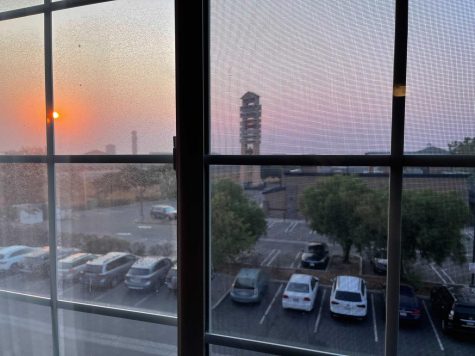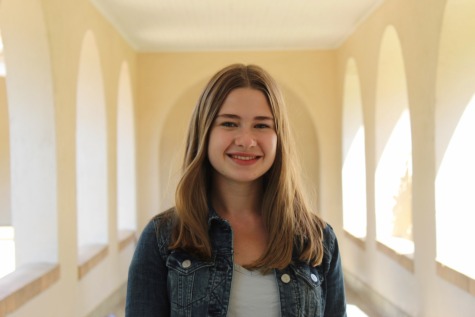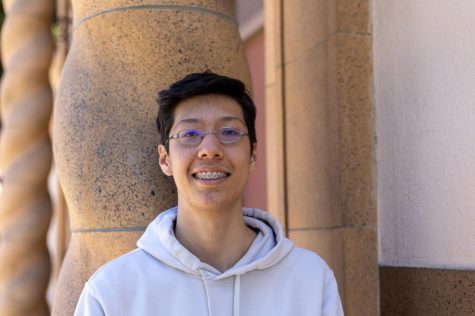PAEA revises calendar as smoke complicates COVID protocol
September 13, 2021

With the ongoing threat of wildfire smoke, the Palo Alto Unified School District faces the combined challenge of poor air quality and COVID-19, prompting the Palo Alto Educators Association to alter its calendar proposal.
PAUSD’s air quality protocols follow California Department of Education recommendations, stating that students will stay indoors while at school, including during lunch, when Air Quality Index levels reach 151, according to an Aug. 18 update from the district.
“COVID protocols for indoor occupancy and eating are suspended during periods of unhealthy outdoor air quality,” the protocol states.
The suspension of COVID-19 protocols causes concern for some community members. According to Teri Baldwin, President of Palo Alto Educators Association, many teachers are worried about the air quality protocol, prompting PAEA — which is negotiating work calendars for the coming years — to revise calendar proposals to include the possibility of smoke days, much as schools in colder climates have snow days.
“We will be proposing calendars with unhealthy air quality make-up days incorporated in them,” Baldwin stated. “This would allow for the possibility of closing schools if there are days with unhealthy air quality and then we would have those days on the calendar to be able to make them up.”
PAUSD Superintendent Don Austin told The Paly Voice late last month that the district takes direction from the California Department of Health, which has not designated a specific AQI level requiring school closure. According to Austin, the district plans to remain open and rely on commercial-grade filtration devices already in place in classrooms due to COVID-19.
“They [the California Department of Public Health] have said that in the event of poor air quality 150+, being inside and eating inside is healthier than going outside in the bad air quality,” Austin said. “Eating indoors, with the [MERV-13] filtration devices that we have, unmasked, is healthier than sitting outside.”
According to Baldwin, many teachers are concerned about the spread of COVID-19 if students and staff must stay indoors during poor air quality.
“Overall, teachers aren’t happy with this guidance,” Baldwin stated. “The guidance was last updated in July of 2019, which is before COVID. It isn’t safe to have students eating inside with doors and windows closed during COVID, especially for our unvaccinated students.”
According to Austin, the district purchased and implemented filtration systems as a result of COVID-19, offering improved air quality and circulation within classrooms.
“One of the only positives of COVID is that all of our classrooms now have either MERV-13 [filters] … [or], for the classes in our district that don’t have the luxury of being in a newer building and having the MERV-13 filtrations, they have standalone filtration devices,” Austin said.
Despite recent upgrades to MERV-13 filters, Baldwin said the PAEA worries that COVID-19 may still spread, particularly with the spread of the Delta variant.
“We don’t believe that the ventilation system will keep students safe from spreading and/or contracting COVID inside without a mask,” Baldwin wrote. “People still get colds in places with good ventilation in normal times, and the Delta variant is highly transmissible.”
Rachel Gibson, chair of the district’s Sustainable Schools Committee, voiced similar concerns at the PAUSD board meeting on Aug. 24.
“The district’s protocols allow students to engage in physical activity, and this AQI range of pollution [100-150] from wildfire smoke increases our susceptibility to respiratory infections, including to COVID-19,” Gibson said. “I urge the district to keep all students indoors where they can stay masked during recess, PE and other physical activities when the AQI is between 100 to 150, but to have students eat outdoors during this AQI range since they will need to take their masks off.”
Austin said prior to COVID, the district planned to close schools during poor air quality due to lack of filtration devices inside classrooms.
“We had an MOU [Memorandum of Understanding] agreement with our teachers that if we hit 150 or more, we’d close schools,” Austin said. “That has since passed. That agreement no longer exists because that was pre-filtration investment.”
According to Baldwin, temporary remote learning would be ideal, but PAEA plans to reflect state directives in its calendar proposal by building in smoke days.
“We would prefer to just switch to remote learning on those days so that no days have to be made up but we have been told by the district that the state won’t allow that as an option,” Baldwin stated. “So this [temporary closure] is the option we will try to pursue.”



